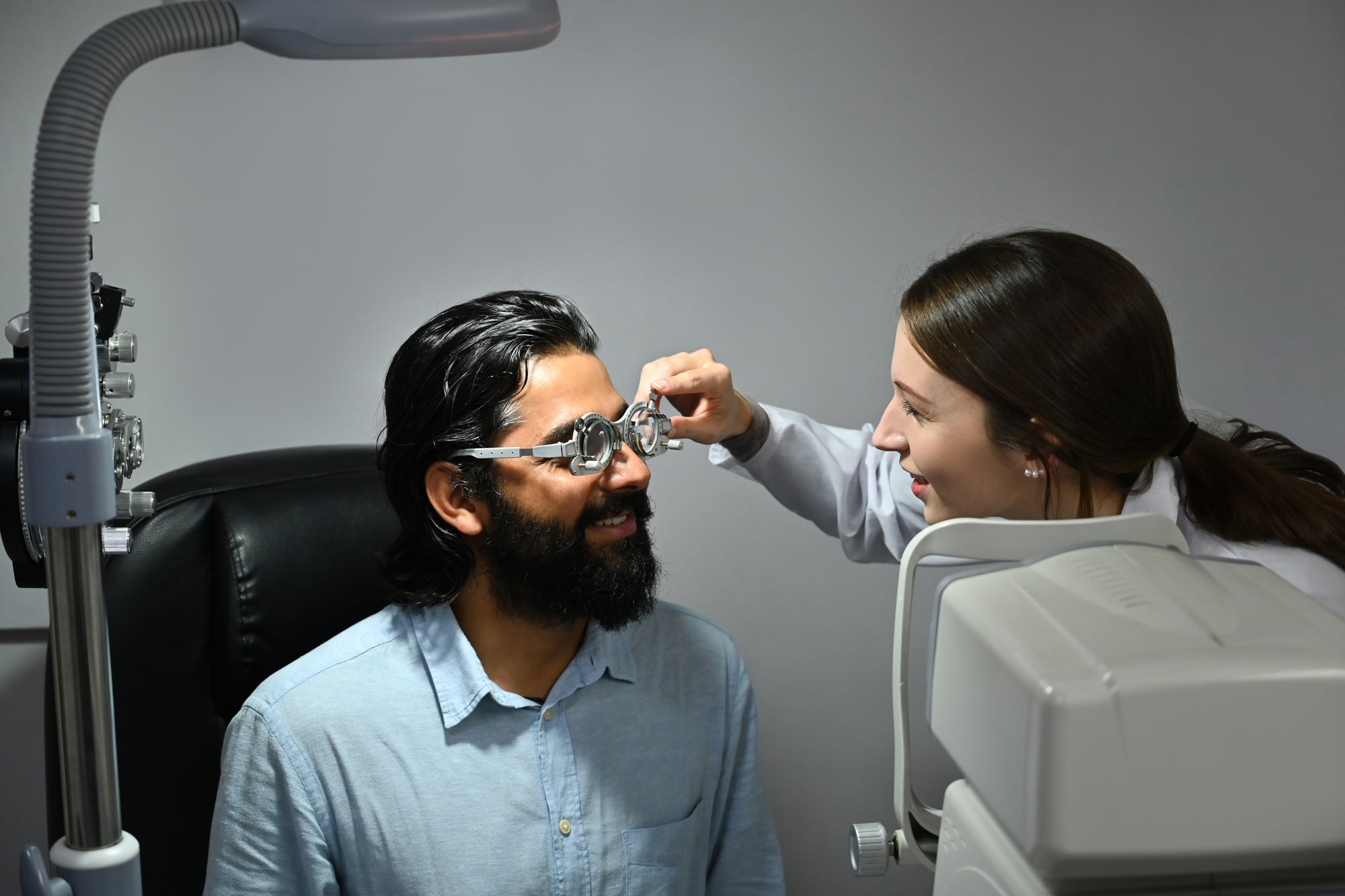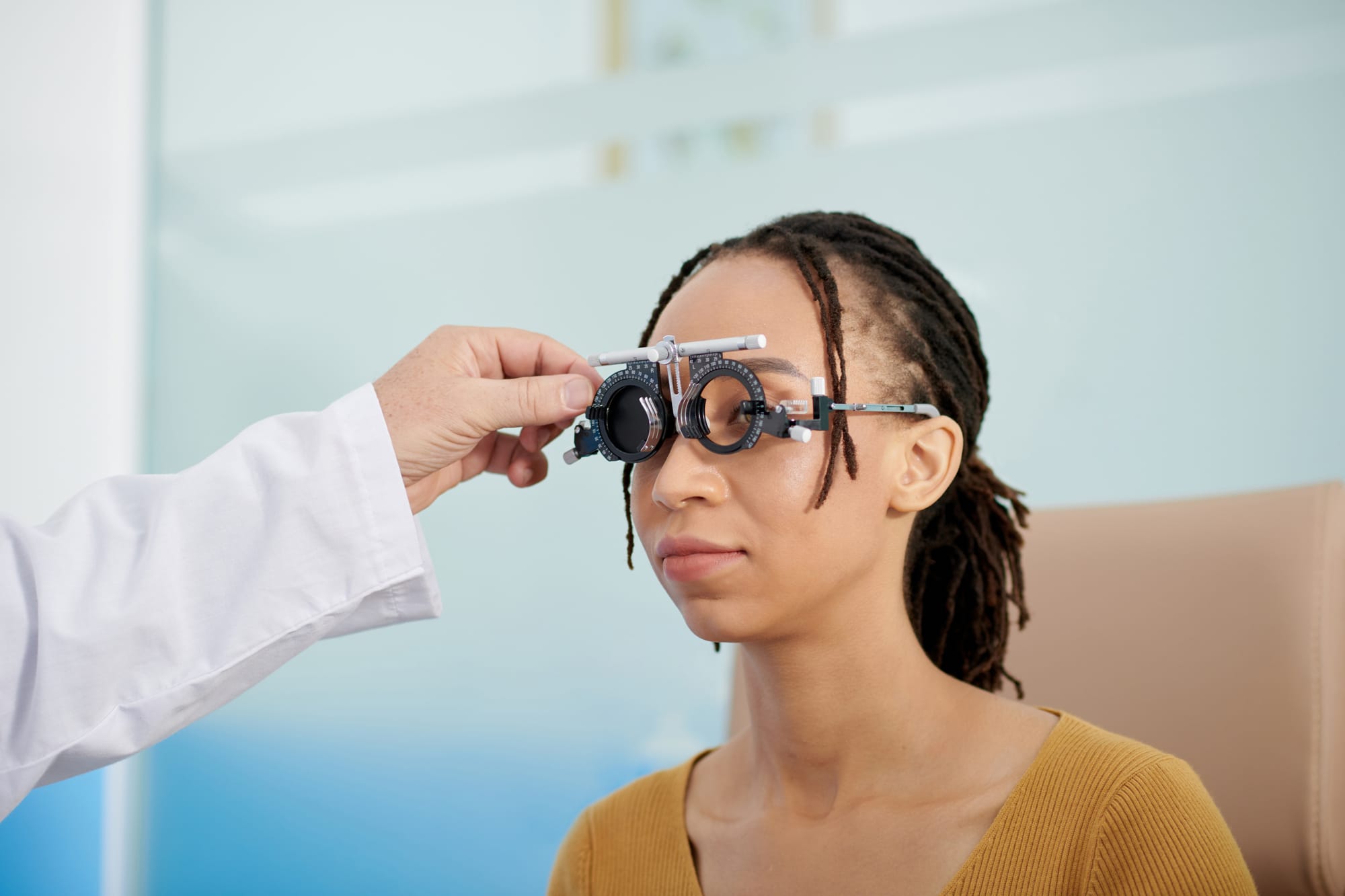Understanding Astigmatism: An Overview
Astigmatism is a focus error by the eye, caused by an irregular shape of the cornea or lens, leading to blurry or distorted vision. Unlike one normal eye, where the cornea is evenly rounded, astigmatism occurs when the cornea or lens has differing curves. This causes light to refract incorrectly, making it hard for your eye to focus clearly. If you are recognizing signs like squinting or regular eye strain, this may be an indication you have a degree of astigmatism. To better understand what is considered astigmatism, it is important to know how the strength and quality of astigmatism is determined on a scale. The roundness of the eye is measured in units of diopters when determining eye prescription. An eye measurement of 0 diopters is considered a “perfect eye.” Most individuals' eyes measure between 0.5 - 0.75 diopters; beyond 1.50 diopters is when people generally will require some form of glasses or contact lenses to help offset their astigmatism.Common Symptoms of Astigmatism: Identifying the Signs
If you are living with astigmatism, you probably often experience a range of symptoms that affect your day-to-day habits. These symptoms might include blurred vision, particularly when looking at objects near or far. Other symptoms you might run into include:- distorted vision
- eye discomfort
- eye strain
- squinting
- headaches
Exploring the Causes of Astigmatism
 At the heart of astigmatism is the problem of an irregular shape of the cornea or lens. These structures in the eye are designed to focus light, but when their shape isn't perfectly curved, vision can become blurred at any distance. This flaw in the curvature, making the cornea or lens more oval-like than a normal eyeball (which is round like a basketball), causing light to travel to incorrect points on the retina.
There are two forms of astigmatism: horizontal and vertical.
At the heart of astigmatism is the problem of an irregular shape of the cornea or lens. These structures in the eye are designed to focus light, but when their shape isn't perfectly curved, vision can become blurred at any distance. This flaw in the curvature, making the cornea or lens more oval-like than a normal eyeball (which is round like a basketball), causing light to travel to incorrect points on the retina.
There are two forms of astigmatism: horizontal and vertical.
- Horizontal astigmatism is when the eye is wider than it is tall
- Vertical astigmatism is when the eye is taller than it is wide
- eye disease
- eye injury
- surgery
Astigmatism and Its Potential Overlap with Binocular Vision Dysfunction
While astigmatism is often due to an irregularly shaped cornea or lens, its manifestation can sometimes overlap with binocular vision dysfunction (BVD). Those experiencing astigmatism symptoms may also have BVD, complicating their vision challenges. Both conditions can disrupt the eye's ability to properly focus light, leading to a distortion in how we see the world. It's critical to differentiate between the two to ensure the correct diagnosis and the most effective treatment for your eye health.Astigmatism vs. Binocular Vision Dysfunction: Understanding the Differences
While both astigmatism and BVD affect vision, they have individual causes and symptoms. Astigmatism typically stems from an irregular corneal shape that leads to blurred vision at any distance and is commonly present at birth. On the other side, BVD arises from a misalignment of the eyes, which can cause symptoms like double vision, eye strain, or headaches. Knowing how to differentiate the two conditions is crucial, as it influences treatment direction. If you're experiencing vision symptoms, it's essential to get evaluated to discern whether it's astigmatism or BVD affecting your eyesight.Who’s at Risk for Developing Astigmatism?
If you have a family history of astigmatism or other eye conditions, you are more likely to develop this vision error. Individuals with diabetes or those who've experienced significant eye injury could be predisposed to changes in the eye’s shape, potentially leading to astigmatism. Additionally, some people may inherently have a cornea or lens shape that is prone to developing astigmatism as they age, so regular eye check-ups are important.Astigmatism Diagnosis: Procedures and Tests
Diagnosing astigmatism is crucial for maintaining good eye health and vision clarity. During an astigmatism diagnosis, eye specialists go through a variety of tests and procedures to examine how light interacts within your eye. These tests measure focus on the cornea and lens, assessing their shape and functionality. Accurate tests, such as keratometry and corneal topography, help detect astigmatism by evaluating the cornea's curvature, while refraction tests see how light bends as it passes through the lens and cornea.Considering Binocular Vision Dysfunction in Astigmatism Diagnosis
When diagnosing astigmatism, it's crucial to consider the potential for BVD. This condition can act like or worsen astigmatism symptoms, making an accurate diagnosis challenging. A vision specialist will explore the relationship between astigmatism and BVD to ensure that treatment addresses all root causes. Proper assessment of vision concerns is essential, as astigmatism and BVD can both significantly impact your vision. Distinguishing between the two can be difficult as symptoms can overlap, and astigmatism can lead to the development of BVD. Thus, making it necessary to see a trained specialist familiar with BVD to provide the right treatment plan.Treating Astigmatism: Options and Considerations
 Addressing your astigmatism often involves a choice between corrective lenses or opting for surgery. Prescription lenses, whether glasses or contact lenses are the most common treatment.
Meanwhile, surgical options, like LASIK, offer a more permanent correction. Whether you're considering eyeglasses, contact lenses, or opting for surgery, it's important to weigh these options with a vision specialist, who will guide you through the benefits and considerations each treatment option presents to better your vision health.
Addressing your astigmatism often involves a choice between corrective lenses or opting for surgery. Prescription lenses, whether glasses or contact lenses are the most common treatment.
Meanwhile, surgical options, like LASIK, offer a more permanent correction. Whether you're considering eyeglasses, contact lenses, or opting for surgery, it's important to weigh these options with a vision specialist, who will guide you through the benefits and considerations each treatment option presents to better your vision health.
Potential Complications Associated with Astigmatism
When astigmatism is left unaddressed, several complications can arise affecting your vision. People with severe astigmatism may notice a significant distortion or blurriness, leading to difficulties in daily activities. The irregular shape of the cornea or lens in the eye responsible for astigmatism can worsen over time if not properly managed. If not addressed, uncorrected astigmatism might contribute to the development of headaches and eye strain, causing more discomfort for yourself. Untreated astigmatism may result in loss of visual acuity and amblyopia (also known as lazy eye).When to See an Eye Doctor for Astigmatism
If you are living with vision concerns, it is recommended to seek out an eye doctor when symptoms of astigmatism, like blurred or distorted vision, impact your quality of life. If you’re experiencing headaches, eye strain, or difficulty focusing at various distances, these are signs you should visit an eye specialist. Early detection is crucial in limiting the impacts on your eye health. Yearly eye examinations are the best standard of practice to assess eye health and protect you from disease and complications. Due to the eye’s sensitivity, catching and treating issues is best done as soon as possible to ensure the eye is well protected through life.Takeaway: Living with Astigmatism
Living with astigmatism means adapting your way of life due to the irregular shapes of your cornea or lens. Living a normal life is no problem with corrective steps. Astigmatism doesn't have to hinder daily activities; with proper treatment, those affected can enjoy clear vision. Regular eye check-ups help maintain optimal vision, allowing people to live without trouble despite the condition. It's important to understand that astigmatism is a common eye variation that, with care, won't significantly limit your life.Frequently Asked Questions

How often should I get my eyes checked if I have astigmatism or suspect I might have binocular vision dysfunction?
If you have astigmatism or suspect you may have binocular vision dysfunction BVD, it's recommended that you have a comprehensive eye examination annually, or as directed by your eye care provider. Individuals with astigmatism should ensure their prescription is up-to-date because uncorrected astigmatism can lead to various eye problems. Those with BVD, a condition where the eyes have difficulty aligning, also require routine check-ups to monitor their vision and any associated symptoms, such as dizziness or difficulty reading.Can children be affected by astigmatism or BVD, and how are these conditions managed in younger patients?
Yes, children can indeed be affected by astigmatism and BVD. For young patients, early detection and management are crucial to ensure proper visual development and to address any related academic or behavioral challenges. Astigmatism can typically be corrected with glasses or contact lenses, ensuring clear vision for the child. BVD may require vision therapy, specialized lenses, or prism lenses to align the eyes correctly and improve binocular function.Are there any lifestyle changes or exercises that can help manage symptoms of astigmatism or BVD?
Regarding astigmatism, visual exercises won't rectify the curvature of the cornea. However, ensuring proper lighting and taking frequent breaks during work involving screens or reading can help minimize eye strain. For managing BVD symptoms, microprism lenses are the most expedient way to obtain relief. Additionally, incorporating regular physical activity and maintaining a healthy lifestyle can support overall eye health.What role does digital screen use play in astigmatism and BVD, and how can I minimize any negative impacts?
Digital screen use does not cause astigmatism or BVD, but it can exacerbate symptoms such as eye strain and headaches. To minimize these impacts, adopt the 20-20-20 rule: every 20 minutes, take a 20-second break and look at something 20 feet away. Consider sitting and standing adjustments to your workstation, and ensure your screen is at eye level to avoid unnatural eye positioning and strain on the neck and back muscles. If necessary, discuss with your eye care provider if computer glasses or lens coatings that block blue light might be beneficial for you.Can astigmatism improve or worsen over time, and how does this compare to the progression of BVD?
Astigmatism may change over time, especially during childhood when the body is growing rapidly, or due to factors like eye surgery, injury, or certain diseases. Regular monitoring is important to fit vision changes. Like astigmatism, BVD can worsen with age and can become more apparent as demands on the visual system increase, such as during periods of intense studying or screen use. Knowing this, it is essential for you to maintain regular check-ups with your eye care professional to keep tabs on your vision health and make adjustments as necessary.Seeking Help: When to Consult a NeuroVisual Specialist for Astigmatism and/or BVD?
Living with astigmatism and/or BVD doesn’t have to be the norm. You don’t have to keep suffering with driving-related pain, anxiety, or discomfort. Consider getting screened for BVD with our online tool. The NeuroVisual doctors at Vision Specialists are specially trained to correctly diagnose and treat astigmatism and BVD. Contact Vision Specialists of Michigan and get started with the right therapy for your symptoms, and see how much better your vision and overall well-being can be.Filed Under:







